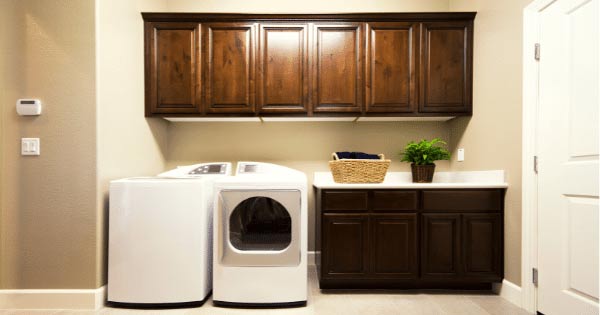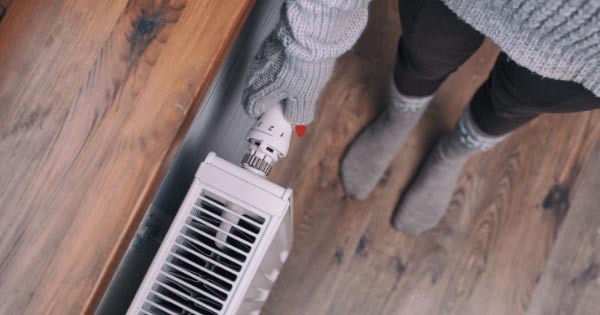
by California Casualty | Behind the Scenes |
California Casualty Executives, Management, and Employees came together for the annual Year-End Meeting earlier this month. As is tradition, department leaders presented their strategies, actions and future plans to continue to build the company that has stood the test of time for over 100 years. With Customer Experience and Financial Stability our collective beacon for success, the two-day meeting was filled with insight, discussion, and collaborative solutions.
Sales Vice President, Lisa P. shared the ups and downs of the Sales team throughout 2021 – from new technology advancements to staffing challenges. She went into detail all of the tools utilized to increase connectivity with prospects requesting a quote, provide an extensive review of policy coverages and options for a personalized solution, and deliver a customer experience that surpassed expectations. Lisa also educated the group of the various employee engagement and hiring tactics they are using to counter the Great Resignation happening around the country.
Direct Mail Director, Richard S. provided an insider’s view to the strategies and tactics he utilizes for the various group mailings sent throughout the year. His presentation highlighted the effectiveness of testing various product/service messages, call to actions, and distribution allocation. The takeaway: groups that supported communications to their members, and allowed for a little creativity saw better adoption of the California Casualty auto and home member benefit in 2021.
Digital Marketing Director, Steve T., alongside Social and Digital Marketing Manager, Demian T., combined their presentation to deliver the year in review for Internet Marketing. The duo shared all of the various ways California Casualty utilizes digital and social media to reach, engage and listen to our prospects and customers. Thanks to smart planning, sound strategy, and the efficiency that comes with online programs, they were able to make a big impact with a small team.
Marketing Solutions, led by Marketing Communications Manager, Robin F., illustrated the various ways they extend the CalCas brand to our prospects and customers outside of the Direct mail and Digital realm. From group publication print ads to the policyholder e-newsletter, Connection, Robin explained the efforts of engaging with prospects beyond their policy paperwork. She also showcased the various communication pieces developed for Partner Relations to use for their engagement efforts.
Agency Services, presented by Bianca O., AVP, and Agency Services Manager & Sr. Customer Service Team Manager, explained to the group how our ability to offer members additional insurance options through a subset of insurance partners gives members the coverage solutions they need with one-stop shopping. In 2021, Agency Services saw an increase in boat, motorcycle, classic car, pet insurance, and umbrella policies.
Partner Relations was represented by Debbie H., VP Field Relations, Roxanne D., VP Account Relations, and Lisa A., AVP and Account Manager. The ladies’ presentation captured Group Leaders’ sentiment of the value California Casualty brings as a member benefit partner. They reflected on the transition their teams experienced during COVID – on-site to virtual to hybrid – noting the challenges, learnings, and solutions implemented to keep relationships strong at the national, state, regional, and local levels.
Customer Service – with Daphne P., VP Customer Service, Cheryl C., Customer Service Manager, and Becky P., AVP and Service Manager, presenting – illustrated the efforts their team is implementing to continually measure, monitor, and improve service levels. They explained the many tactics they are trying now and into the future to keep representatives motivated, trained, and available to assist our American Heroes no matter how complicated or stressful the conversations may get.
Underwriting, through a presentation by Hillary B., UW Analyst and Team Manager, and Danielle S., UW Operations Manager, shared the accreditations and promotions earned within the department over the past year, illustrating that continuing education and refined skill sets are imperative to the success of an underwriting department. Hillary and Danielle also highlighted the efficiencies gained within their department, improving the time it takes to issue a policy once it has been written by Sales.
Actuary walked the group through the nuts and bolts of auto insurance pricing. Wen L., Auto Pricing Manager, was able to address questions regarding the how and why for California Casualty-specific group rates and customizations required to rate properly for associated risks while offering our partners and their members the member rates they expect.
The meeting ended with closing remarks from CMO, Mike M. and Interim CEO, Bob N. reiterating the progress made, the improvements needed and the anticipation for future endeavors planned.
This article is furnished by California Casualty, providing auto and home insurance to educators, law enforcement officers, firefighters, and nurses. Get a quote at 1.866.704.8614 or www.calcas.com.

by California Casualty | Good to Know, Homeowners Insurance Info |
It’s cold out there—a good time to crank up the heat or put a few logs on the fire. While you might enjoy the warmth and ambiance, winter is actually one of the worst seasons for indoor air quality. That’s because we’re nestled inside our comfortable homes along with all of the pollutants and moisture. Fun, right?
Our chances of catching a cold are greater during the winter, especially if our home’s air quality is poor. In addition, trapped pollutants increase our risk of asthma and other respiratory problems. The good news is that we can do something about it! According to the Environmental Protection Agency (EPA), there are 3 basic strategies for better indoor air quality: (1) controlling sources of pollutants (2) improving ventilation, and (3) cleaning the air. Here’s what you need to know to improve your indoor air quality this winter.
Source Control
There are many sources of indoor pollution, ranging from fuel-burning appliances to building materials and furnishings, and even household cleaning products. Take a look around your house to identify the sources of poor indoor air quality, so that you can take steps to reduce their impact.
Airborne chemicals
Also known as VOCS – volatile organic compounds – these “hang” in the air for us to breathe. Scented air fresheners, cleaning products, paint, and even carpets and furniture release chemicals in the air. VOCs can cause health problems from respiratory illnesses to headaches, dizziness, irritation in the eyes, ears, nose, and throat, and more. You can choose low VOC paint, or repurposed/upcycled furniture to reduce some chemicals, and use natural cleaning products.
Tip: A bowl of vinegar with lemon juice will draw out bad smells. Baking soda and lemon juice also absorb odors.
Carbon dioxide
During the winter months, we’re gathered together indoors, which means we’re breathing in close proximity to each other. As carbon dioxide levels rise, that can cause headaches, drowsiness, and other problems. If the levels get high enough, it can even impact decision-making. Limit candle lighting and fireplace use which can contribute to carbon dioxide levels. Open a window for a few minutes, even if it’s cold, to let the fresh air in.
Tip: Add plants like red-edged dracaena, weeping figs or bamboo palm to help convert CO2 to oxygen.
Radon gas
When our doors and windows are shut, it’s easy for radon gas to build up. Radon gas comes from the natural decay of soil. It moves into your home through cracks or even through your water supply. While it may be natural, radon is radioactive and dangerous. It’s the number one cause of lung cancer among nonsmokers. A radon test kit can measure your home’s levels. The EPA offers guidance on radon reduction systems.
Tip: Most states can provide a list of qualified radon service providers. Find more information at https://www.epa.gov/radon/epa-map-radon-zones-and-supplemental-information.
Level of humidity
Air that is too dry – or too moist – can cause problems. The dry air in winter causes dry skin, chapped lips, dry nose, dry throat, and cracked fingertips. High humidity causes mold and condensation which also can affect our health. The ideal level for household humidity should be between 30% and 59%. You can buy an inexpensive monitor to track your household humidity. To help reduce it, use your exhaust and ventilation fans, take cooler showers, or consider a dehumidifier. UV lamps professionally installed in your HVAC system can help kill harmful bacteria and mold before they enter the air supply.
Tip: Run your air conditioner. It may be winter, but your air conditioner can help clear humidity from your home.
Fireplaces
The seasonal scent of wood-burning fireplaces may be wonderful, but that smoke is adding fine particles of dust, dirt, and liquids to the air. Choose clean-burning logs to reduce the effects, and never use wood that is wet, painted, or treated. Gas fireplaces that are vented to the outdoors are better for air quality.
Tip: Warm your chimney flue before starting the fire to help it draw smoke upwards and out of your home.
Dust and dirt
Dust and dirt are respiratory irritants and frequent cleaning can help. Dust and clean your home regularly. Take cushions and rugs outside and beat them to loosen and get rid of dirt. Then wipe them clean with a damp rag to pick up any additional particles and mites. Vacuum rugs and carpets using a vacuum cleaner with a high-efficiency particulate air (HEPA) filter.
Tip: A bristle top doormat helps to trap dirt before it comes into your home. Wash or vacuum your mats regularly to prevent buildup.
Pets
We love our pets but pet hair and dander can affect indoor air quality, especially for those of us who are sensitive or allergic. Air filters and ventilation can help. (See next sections.) Brush your pet regularly to reduce the amount of shedding. Keep a towel by the door and wipe their feet to prevent them from bringing additional dirt into the house.
Tip: Use a window squeegee on your carpet to pick up pet hair. The rubber will loosen the hair and gather it into clumps.
Improved Ventilation
Your HVAC system is your home’s first line of defense against airborne particles. Make sure your system is well maintained and your ducts are cleaned. You also can upgrade the air filters in your HVAC system to a higher MERV rating, if your system allows it. This will increase their ability to remove particles, germs, viruses, and chemical gases. Check with an HVAC professional.
Ventilation devices help air circulation that keeps indoor air clean. They typically are installed in a home’s attic or roof and bring in fresh air on a regular basis while expelling stale air.
Air Cleaners
There are many types of air cleaners for home use, ranging from table-top models to expensive systems for the whole house. An air purifier with a HEPA filter can remove anywhere between 70-95% of airborne particles. Consider buying an air cleaner for each room. Choose one with smart sensors that can detect pollutants in real-time and adjust their fans accordingly.
In addition, you may consider an indoor air quality monitor. These devices can monitor levels of moisture and pollutants, and share information on which part of the house is contributing to poor air quality.
Your home is your greatest investment. Protect it as well with the right home owner’s insurance.
This article is furnished by California Casualty, providing auto and home insurance to educators, law enforcement officers, firefighters, and nurses. Get a quote at 1.866.704.8614 or www.calcas.com.

by California Casualty | Consider This, Homeowners Insurance Info |
It’s almost time to find room for all of the new gifts that you received over the holidays. The easiest way to keep track of all of your possessions is by creating- and continually updating- a Home Inventory.
A Home Inventory is a list of the valuable objects that you have inside of your home.
It may sound like a waste of time, but this list will be your saving grace if there is a fire, destructive storm, or if someone breaks in and steals your belongings. Without one, many people have a difficult time pinpointing or recalling everything that might have been destroyed or taken, and unfortunately, that can delay homeowner claims or keep you from getting your full compensation.
So, when the New Year rolls around make the time to take inventory of your home and all of your new treasures. It’s easy! Just go room by room and document:
- Electronics
- Personal Care Items
- Jewelry
- Art
- Kitchen items and appliances
- Furniture
- Carpeting
- Beds and linens
- Clothing
- Sports equipment
- Tools
Don’t forget to take pictures of the exterior of your home as well -photos are best from all angles- including the landscaping and any decks or porches- and also take note of everything in the garage, attic, or basement, like holiday ornaments, lawn and yard equipment, tools, etc.
You can choose to write everything down, but we suggest to use photo/video documentation of your belongings. To make the whole process easier on you we’ve created a Household Inventory Checklist that walks you through each possession you may have, so you don’t forget anything- you can even document the value. Just attach your photos to the document or put them in a folder on your phone and you are good to go! Click here for the checklist.
Trying to tally up what needs to be replaced is not something you want to do in the event of a claim, so taking the time to complete an inventory will be more than worth it. You can even use the time to get rid of the old and make room for all of the new!
Related Articles:
Too Late is Too Late: Why You Need a Home Inventory
5 Things Not Covered By Most Home Insurance Policies
Protect Your Home and Family- Know It. Do It.

by California Casualty | Good to Know, Safety |
As we head into the most wonderful time of the year, cybercriminals are gearing up for their busiest season.
While you are carefully crafting your holiday gift list (and checking it twice!) these criminals are perfecting their cyber scams, online fraud schemes, and identity theft plans.
So before you join the millions of others searching out those perfect stocking stuffers, check out these 10 tips to protect yourself and your family online.
1. Secure your home network – Use strong passwords and WPA2 or WPA3 encryption (see tips here to secure your network). Change your router/modem’s default name and pre-set password.
2. Update your antivirus software – Antivirus software is always being updated (thanks to a continuous stream of new threats) so make sure yours is up to date on all your household’s devices.
3. Use a password manager – Create strong passwords on all your devices and use a password manager to keep track. Consider using two-factor authentication to add an extra layer of protection.
4. Update your devices – Operating system and software updates often include security updates. Make sure your computers, tablets, and phones are all updated. Turn on auto-updates so you don’t have to think about it.
5. Use one or two credit cards and monitor them – Using just one or two cards for your holiday shopping will make it much easier to track purchases and spot any fraud early on. Some lenders will even alert you when your card logs transactions that are out of your normal spending pattern and ask your permission before completing the purchase. Mobile pay options such as Apple Pay or Google Pay also offer good protection because they use secure tokens instead of an actual card number.
6. Only shop reputable websites – Big brands and companies are more likely to have strong security on their sites’ transaction platform. But no matter the website, if a link, landing page or online shopping cart looks suspicious, log off immediately.
7. Watch for phishing – Phishing spikes during the holidays. These emails and texts usually look like they’re coming from a source or company you know. They typically ask for sensitive information such as personal or bank information and ask you to click on a link or attachment. Remember that government agencies and reputable companies will never ask you to send sensitive information this way. Delete these messages without clicking on anything. If you’re on the fence about its legitimacy, you can open a separate browser and log in to your account fresh – or call customer service to double-check.
8. Be smart on social media – If you’re headed out of town during the holidays, don’t post plans or info publicly on your social channels. This could make your home vulnerable to a break-in.
9. Be savvy with donations – Many people generously open their wallets during the holidays to help those in need or causes they support. If you’re planning on donating this year, be extra cautious. Stick to reputable, well-known charities. Contact them directly to donate, rather than clicking on a link or giving your information over the phone.
10. Watch your front porch – More online shopping means more deliveries. Bring packages in as soon as possible so they don’t tempt thieves. Neglected packages may also make it look like you’re out of town, making your home a target for burglars.
Make sure all family members are on board with, understand, and carry out the above tips before logging on to find those hot holiday deals. This includes kids and teens who are at home and on screens all day – and who usually aren’t as savvy about security and scams. For more safety tips, check out our articles here and here.
If you’re a California Casualty member, take comfort in the fact that you’re automatically enrolled in ID theft resolution services — which provides free help if you are ever the victim of identity theft. Learn more about the services here.
This article is furnished by California Casualty, providing auto and home insurance to educators, law enforcement officers, firefighters, and nurses. Get a quote at 1.866.704.8614 or www.calcas.com.

by California Casualty | Consider This, Homeowners Insurance Info |
Is there anything more frustrating than your washing machine breaking down in the middle of a cycle or your refrigerator dying in the middle of the night? Appliance repairs are not only inconvenient – and seem to only happen at the most inconvenient time – they can also be expensive. Fortunately, regular maintenance can help keep your appliances in good working order for years to come.
No one wants to deal with a broken device in the dead of winter… that’s why fall is the perfect time to do a quick check on all your appliances. Don’t worry, you don’t have to be a master mechanic; most of these maintenance tasks are easy to do on your own.

Laundry Room
Dryers need proper airflow in order to function. When the filter or exhaust is blocked, the heat buildup can cause a fire. Nearly 17,000 clothes fires are reported each year, according to the National Fire Protection Association. Keep your dryer from becoming a fire hazard by following these steps.
-
- Unplug your dryer if it’s an electric model. If it’s a gas model, turn off the gas.
- Pull the dryer away from the wall and detach the dryer duct, the flexible tube connected to the back of the dryer.
- Vacuum inside the duct and in the vent.
- Go outside your home and locate the exterior dryer vent. Remove the cover and vacuum in there as well.
- If your dryer vent is a long one, and the vacuum doesn’t quite get at the lint, you can buy a dryer vent kit that has brushes and tools to get inside.
- Inspect your duct for cracks or tears. If you see any, repair them with aluminum tape. (Do not use duct tape. Despite the name, duct tape does not work well with the heat of the dryer.)
- Reattach the duct.
- Remove the lint screen and vacuum in and around it. If it’s clogged, you can scrub it with warm, soapy water and then dry it with a towel before placing it back.
- Find the moisture sensor. It’s usually a thin metal bar below the dryer door. Clean it with a cotton ball and rubbing alcohol.
Washers benefit from regular maintenance. Not only will this help avoid breakdowns, but also leaks which can cause major water damage to your home. Regular care also will keep your machine clean and your clothes smelling fresh.
-
- Look for cracks, bulges, or leaks in your water hoses. That means you will need to replace them. Your owner’s manual also may recommend a timeframe for replacing hoses even if there is no damage.
- Make sure your washer is at least four inches from the wall to prevent hoses from twisting.
- Clean the lint collector, which is usually found near the center agitator tube or near the top of the machine.
- If you have a front loader, wipe down the door and rubber gasket area.
- Clean the soap scum buildup from your washing machine. Architectural Digest recommends this process using vinegar and baking soda.

Kitchen
Dishwashers can build up debris over time which can cause odors. Doing a deep clean periodically can help keep things fresh.
-
- Remove your racks and inspect them for chips or exposed metal. If you see any, you can buy special touch-up paint to help prevent rust.
- Check and clean your dishwasher drain.
- Remove and wash the filter.
- Run a wash cycle with a dishwasher-safe cup filled with vinegar on the top rack. Use the hottest water setting available.
- Sprinkle a cup of baking soda on the bottom of the dishwasher and run a short cycle.
Refrigerators can work harder than they have to, if not properly maintained. Plus, a clean refrigerator helps keep your food safe from germs.
-
- Your refrigerator’s coils could be clogged with dust, dirt, and pet hair. Use a handheld vacuum to remove this debris. You’ll find the coils either at the back of your fridge or underneath the front.
- Check the seals on your refrigerator’s doors. Make sure the door gaskets are “gunk-free.” This could affect the seal.
- Check the temperature to make sure that the fridge is at or below 40 degrees Fahrenheit and the freezer is at 0 degrees. You can buy a refrigerator thermometer if you have an older fridge without a temperature gauge.
- Your ice maker and water dispenser usually have filters that need changing. Check your manufacturer’s guide for instructions.
- Listen to your fridge. If it makes a loud sound, it may require some maintenance. (Fridges should have low-level hums that are barely noticeable.)
Stoves and ovens are well used during the fall and winter months, especially for holiday meals. Make sure yours are all in good working order.
-
- As you cook on your stove, the range hood draws the cooking steam upward and traps grease particles in its filter. This food-flavored grease attracts pests, so you’ll want to make sure it’s cleaned regularly. Home Depot offers the following steps to clean your range hood.
- Clean stovetop drip pans underneath your burners.
- Make sure the oven has a tight seal; otherwise, it could be losing heat. That will cause food to take longer to cook or cook unevenly. Feel along the seal that lines the door. If you find any broken, torn, or deformed areas, replace the seal, also known as a gasket.
Garbage disposals can host harmful bacteria or grow mold. This Old House suggests this approach: Pour a half cup of baking soda into the disposal. Wait 30 minutes, then pour in one cup of white vinegar. Let the mixture foam for 3 minutes, then rinse with hot water. Finally, grind up two cups of ice and a cup of salt while running cold water. You also can grind lemon peels at the end for a fresh scent.

Heating
Furnaces have a lifespan of 20-30 years when properly maintained. Fall is the best time to check to see that your furnace is working properly before the cold weather descends.
-
- If your furnace is the kind that pulls air from outside, make sure that nothing is blocking the outdoor vent.
- Check that the ducts and vents are free of debris and dust, and securely fastened.
- Check the filter(s) and replace as needed.
- Know the signs that indicate you may need a new furnace. These include frequent breakdowns, a rise in energy consumption, and inconsistent heat where one room is cold and another hot.
Call a professional if you are unsure about maintaining your appliances. If you need to replace an appliance, it’s always good to get at least 3 bids. Make sure the bid includes the removal and disposal of the old appliance.
Your appliances aren’t the only devices that need to be checked in the fall. Help keep your HVAC running smoothly and your pipes thawed all winter by checking out our blog on fall maintenance for your home systems.
This article is furnished by California Casualty, providing auto and home insurance to educators, law enforcement officers, firefighters, and nurses. Get a quote at 1.866.704.8614 or www.calcas.com.
by California Casualty | In Your Community |
See what we are doing in your community and stay up-to-date on contests, giveaways, and more by following us on all of our social media channels.














